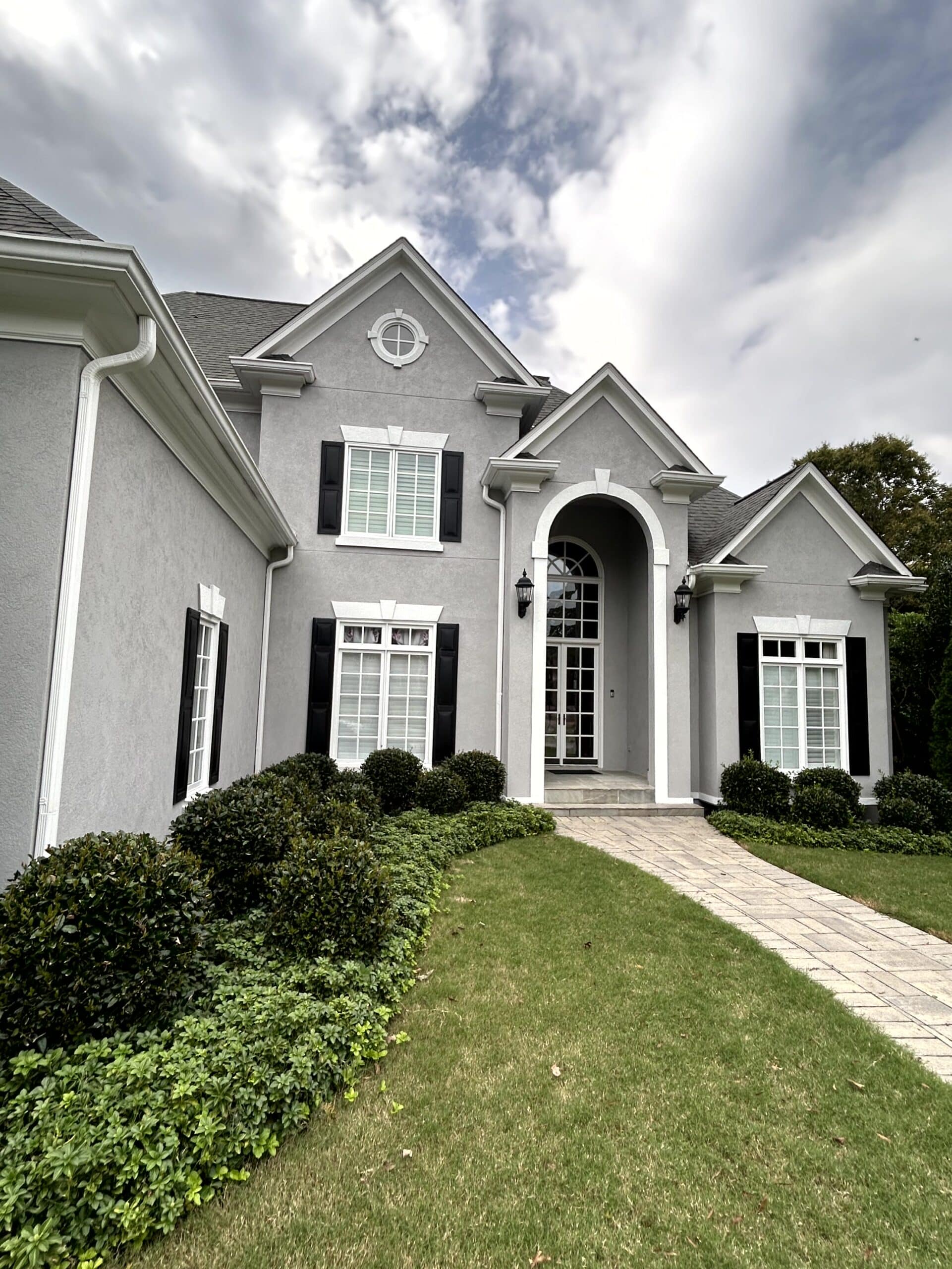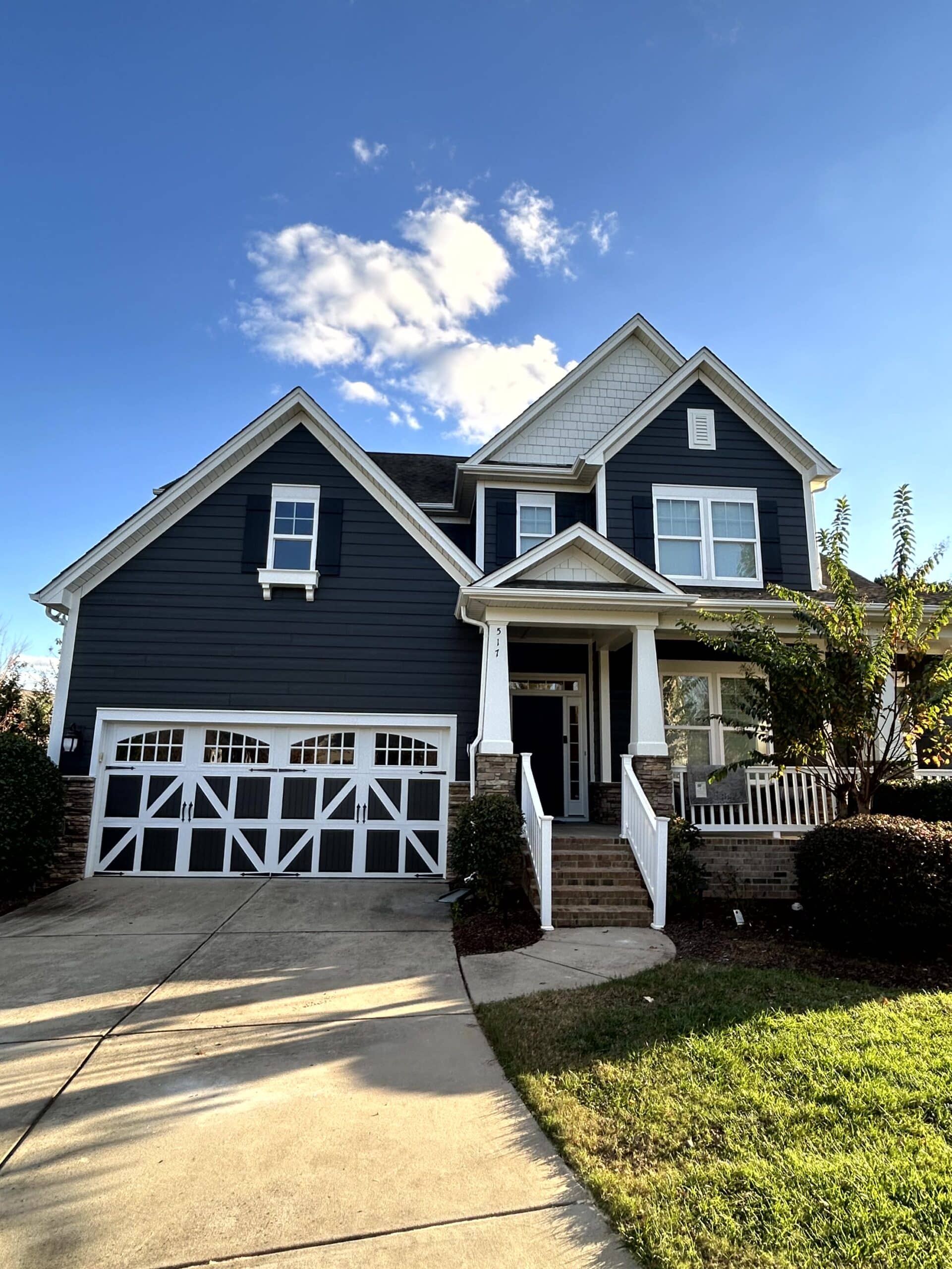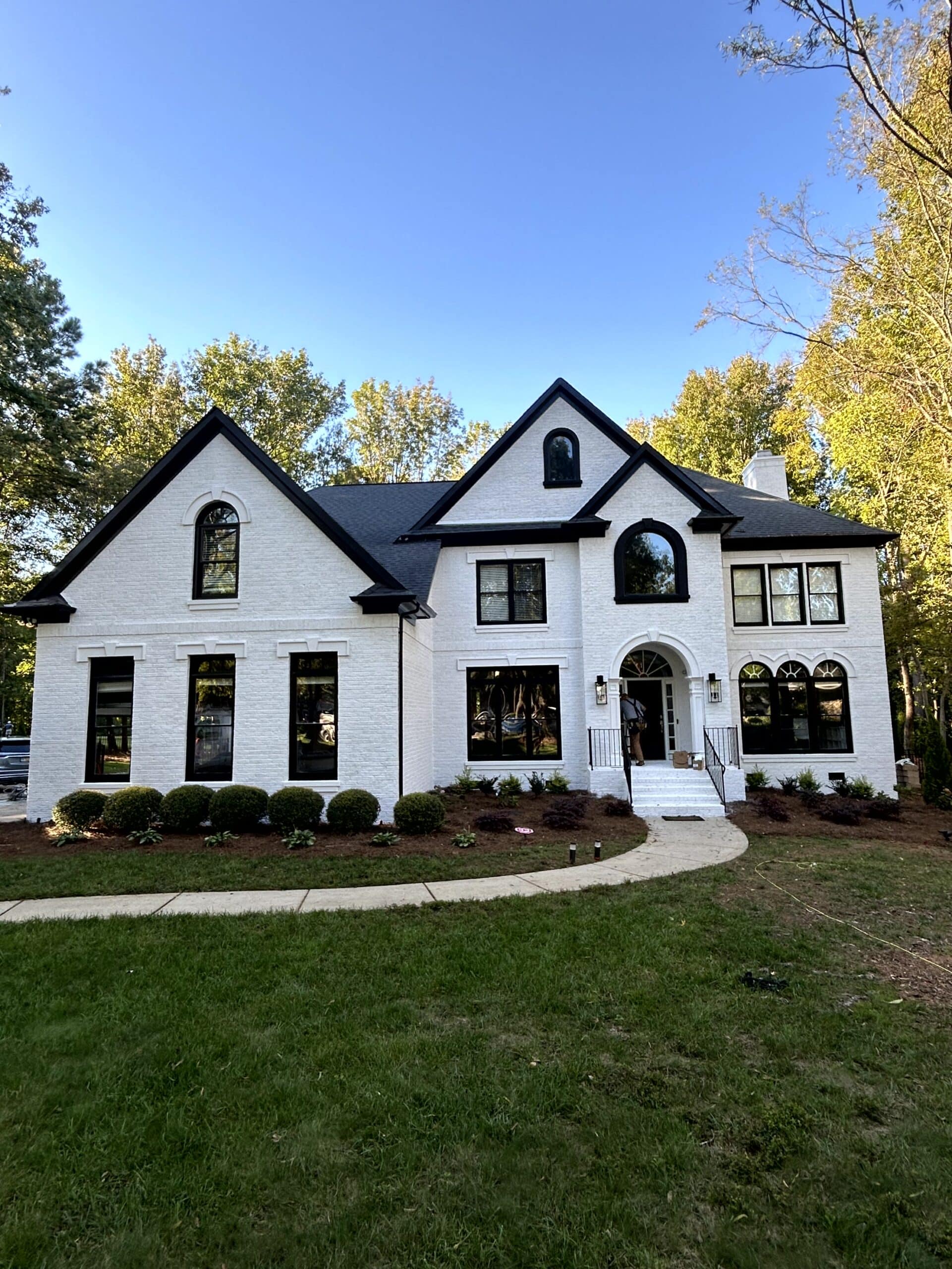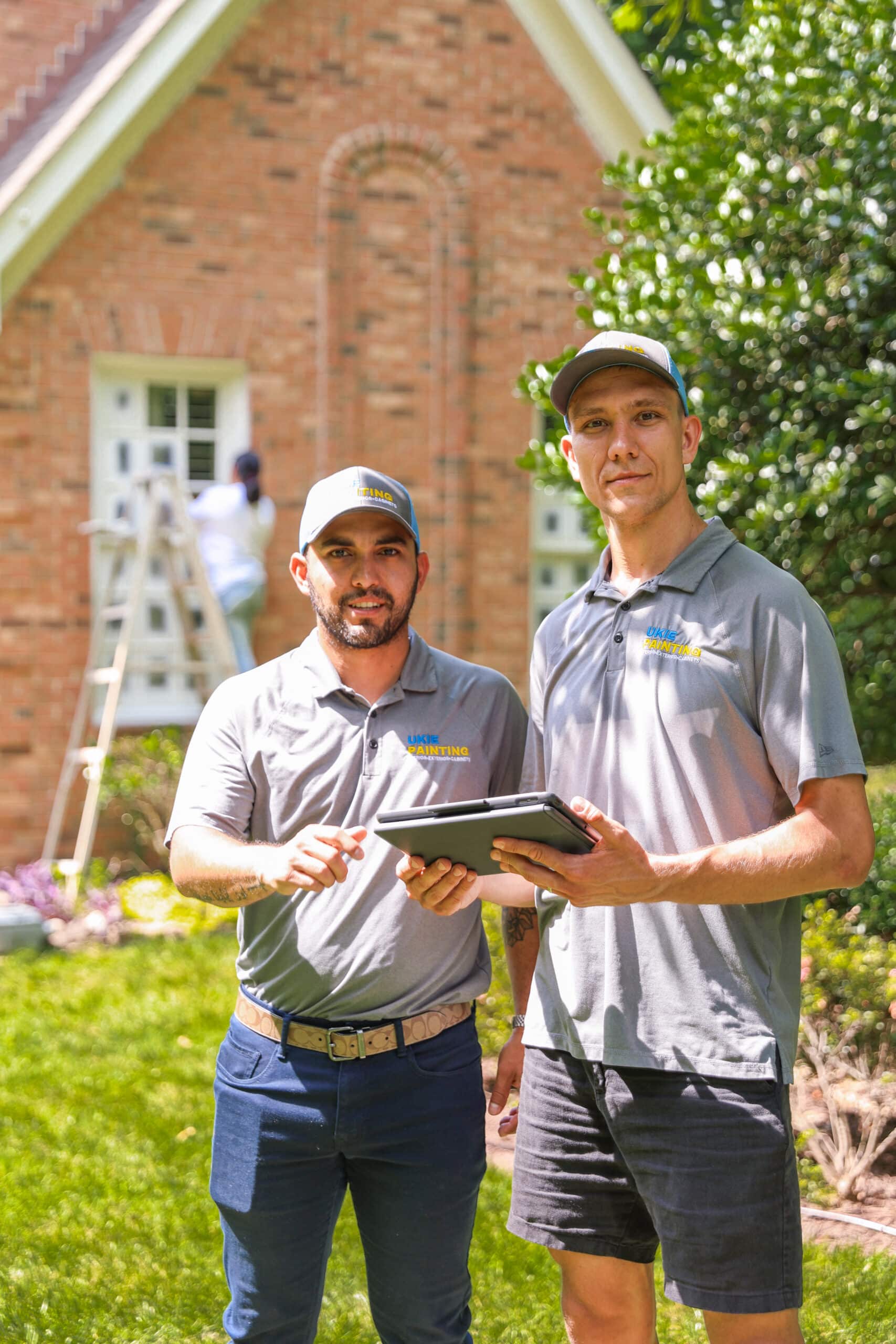Searching “exterior house painter near me” is only the first step. Hiring the right contractor requires verifying their qualifications, materials, prep standards, warranties, and past work.
A low price or fast promise is no substitute for licensed, insured, experienced professionals who follow proper procedures and deliver lasting results.
Many homeowners run into problems with painters who skip prep, use inferior paints, avoid written contracts, or disappear after the job. These shortcuts lead to early peeling, cracking, or fading—often within one or two seasons.
A reliable exterior painting service should demonstrate:
-
Proper surface preparation based on substrate condition
-
Use of premium paints and primers suited for your climate
-
Adherence to drying times, recoat intervals, and product specs
-
Written warranties for both labor and materials
-
Verified references and portfolio of recent work
This guide explains how to vet local contractors beyond online search results.
Why Choosing a Local Painter Matters

Benefits of Local Expertise
Local painters understand your region’s climate—coastal salt spray, freeze–thaw cycles, UV exposure. They know which products resist mold, fading, or blistering in your area. Plus, being nearby means they’re easier to reach for estimates, repairs, or warranty callbacks. Their reputation is on the line in your community—not just another job far away.
Economic and Practical Advantages
Hiring local supports your neighborhood economy and can reduce costs tied to travel, mobilization, or logistics. A contractor down the street is often more flexible on timing, can easily show you completed projects nearby, and is typically invested in maintaining a stellar local reputation.
Essential Credentials and Certifications to Verify
Licensing and Insurance
Ask for their contractor’s license—many states require it, and it shows they’re legally compliant. Make sure they carry general liability insurance (to protect your property if damage occurs) and workers’ compensation (so you aren’t responsible if someone gets injured on your property).
Professional Memberships and Certifications
-
PDCA (Painting & Decorating Contractors of America) membership signals a commitment to best practices
-
EPA Lead-Safe Certification is required if your house was built before 1978
-
Manufacturer-authorized certifications (e.g., Sherwin-Williams Emerald or Benjamin Moore CertaPro) show they’re vetted to apply premium coatings
Warranty and Service Guarantees
A formal contract and written warranties are essential. Ask for classification of covered issues—labor, materials, peel, fade—and know the duration (e.g., 3-year labor + 10-year product warranty). Keep them in writing; verbal assurances won’t help later.
Evaluating Work Quality and Materials
Assessing Surface Preparation Standards
A major reason paint fails early: skipped or poor prep work. A pro service will power wash walls, scrape peeling paint, sand edges to feather smoothly, caulk seams, repair rot, and prime surfaces based on their type.
| Prep Task | Why It Matters |
|---|---|
| Power wash | Removes dirt, mildew, chalk for proper adhesion |
| Scrape & sand | Eliminates loose paint and smooths transitions |
| Caulk seams & joints | Prevents water intrusion and maintains seal |
| Substrate repairs | Ensures solid base, avoids early failure |
Paint Products and Brand Partnerships
Quality contractors use premium paints—like Sherwin-Williams, Benjamin Moore, Behr, and PPG. These brands offer excellent weather resistance, color retention, and protective warranties. Always verify:
-
The specific paint system (not generic house brands)
-
Primer/paint pairing that complies with manufacturer specs
-
Warranty coverage tied to proper product usage
For example, Sherwin-Williams Duration® offers a 25-year warranty only when paired with the correct primer and applied by an authorized contractor certified to use the product.
Application Techniques and Equipment
Good painters use a mix of sprayers, brushes, and rollers depending on surface type. They’ll back-roll sprayed areas to ensure penetration. Look for:
-
Airless sprayers for even coatings
-
Proper scaffolding, ladders, and safety gear
-
Clean tools and organized work areas
Reviewing Portfolio and Past Projects
Ask to visit local jobs they’ve recently completed—or see them in photos. Check online reviews on Google, Yelp, or Nextdoor. Trustworthy contractors welcome site visits and client feedback; evasive or no references is a potential red flag.
Red Flags and Warning Signs

Extremely Low Bids Without Detailed Scope
A low quote is tempting—but without clear explanation of what prep, products, or coats are included, it often means corners will be cut eventually. Cheap bids on vague scopes translate to faster—but shorter-lived—results.
Lack of Written Contract or Vague Terms
If their contract doesn’t specify materials, brand names, prep steps, number of coats, cleanup details or warranty terms—that’s a red flag. Your expectations must be spelled out clearly.
Poor Communication or Unprofessional Behavior
If your calls aren’t returned promptly, they’re late to meetings, or seem rushed or dismissive, expect the same behavior during the job—and afterward. Good communication upfront reflects a reliable partnership later.
No References or Unverifiable Past Work
Don’t hesitate to check references and past project photos. If they can’t provide names, addresses, or contact info—or non-verified reviews—that’s suspicious. Quality contractors are proud to show off their work.
Tips for Getting and Comparing Local Exterior Painting Quotes
Request Multiple Detailed Estimates
Get at least 3 quotes and compare them side by side. Each estimate should outline:
-
Surface prep (washing, scraping, repair, caulking)
-
Product brand, parallel primer & paint
-
Number of coats
-
Application technique
-
Cleanup responsibilities
Ask About Change Orders and Additional Charges
Unexpected repairs—rot, stucco cracks, peeling layers—are common. A good contractor will pause and provide a written change order outlining scope and cost before proceeding.
Confirm Project Timeline and Weather Contingencies
Ask for details on anticipated start date, duration, contingencies for rain, hot, or cold weather. Quality painters build buffer days in—so expect realistic timelines, not unrealistic rush jobs.
People Also Ask (FAQ)
Q1: How do I know if a painting contractor is reputable?
Check for licensing, insurance, verified references, transparent scopes, premium paint use, and quality prep processes.
Q2: What questions should I ask an exterior painting contractor?
Inquire about their experience, paint brands used, prep methods, warranty details, change-order procedures, and clean-up practices.
Q3: How long does exterior house painting usually take?
Most homes finish in 3–7 days, depending on size, weather, and complexity.
Q4: Should I pay a deposit before work starts?
A 10–30% deposit is typical. Avoid large upfront payments—good contractors stagger payments tied to completed milestones.
Q5: Can a local contractor handle stucco or brick?
Yes, many experienced local contractors have expertise in textured or masonry surfaces. Confirm they’ve listed those surfaces among their previous jobs and are using appropriate products and primers.
Conclusion

Choosing the right painter near me isn’t just a convenience—it’s your ticket to a worry-free, long-lasting exterior paint job. By vetting credentials, checking product use, evaluating prep quality, and comparing detailed bids, you avoid common pitfalls that lead to early paint failure.
A smart investment in quality saves you time, money, and stress later on. Look for licensed, insured, locally trusted professionals with clear scopes, warranty coverage, and strong communication.
Ready to hire confidently? Contact [Your Company] for fully vetted, trustworthy exterior painting professionals. We have the credentials, partnerships, and workmanship to deliver stunning, durable results.
Would you like a printable contractor vetting checklist or sample interview questions to streamline your hiring process? We’d be happy to provide them.




